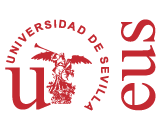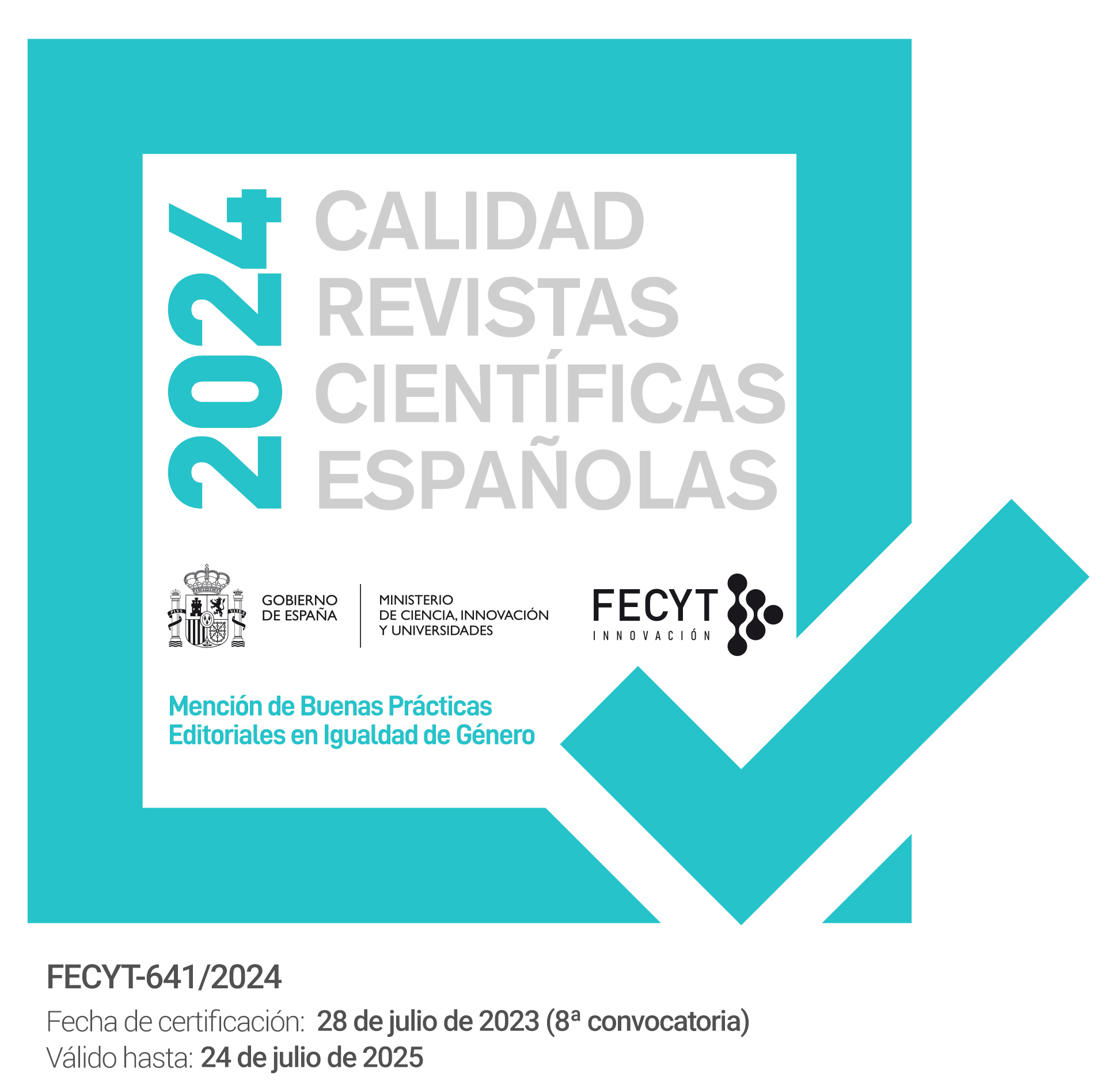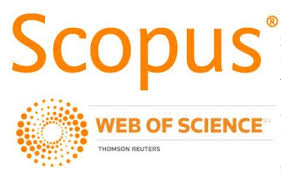Mechanisms for coherence in the written production of communicative functions in Spanish as additional language of Haitian High School students
DOI:
https://doi.org/10.12795/PH.2022.v36.i01.09Keywords:
relations of coherence, Spanish as an additional language, communicative functions, writing, school and immigrantsAbstract
This article presents a description of the use of coherence mechanisms in the written expression in Spanish as additional language, of four communicative functions, among Haitian schoolchildren of III and IV year of high school. This is an exploratory and descriptive study based on the qualitative analysis of samples of written language. This study is oriented from function to form, since its objective is to determine what resources students perform for coherence in high-frequency functions at school. The analysis consisted of segmenting the informants’ texts and identifying the nature of the coherence relationships established between them by cognitive primitives (Sanders and Spooren, 2009 and Sanders et al., 2018). The results in general show the strong predominance of additive relational coherence and a noticeable use of the conjunction to establish coherence relations.
Downloads
Metrics
No metrics found.
Referencias bibliográficas
Agencia de Calidad de la Educación (2019). Estudio de inclusión de estudiantes migrantes en el sistema escolar. Santiago: Gobierno de Chile. http://archivos.agenciaeducacion.cl/CDC_Inclusionmigrantes FINALWEB.pdf [11/03/2022].
Andueza, A. (2016). La escritura como herramienta de aprendizaje significativo: un cuasi experimento en la clase de ciencias. Revista Complutense de Educación, 27(2), 53-58. http://hdl.handle.net/11162/121034 [11/03/2022].
Barton, D., y Hamilton, M. (2004). La literacidad entendida como práctica social. En V. Zavala, M. Niño-Murcia y P. Ames (Eds.), Escritura y sociedad. Nuevas perspectivas teóricas y etnográficas (pp. 109-139). Red para el Desarrollo de las Ciencias Sociales en el Perú.
Baynham, M. (2011). Language and migration. In The Routledge Handbook of Applied Linguistics (pp. 433-448). Routledge.
Beniscelli, L, Riedemann, A., y Stang, F. (2019). Multicultural y, sin embargo, asimilacionista: paradojas provocadas por el currículo oculto en una escuela con alto porcentaje de alumnos migrantes. Calidad en la Educación, 50, 393-423. http://doi.org/10.31619/caledu.n50.522
Brisk, M. E. (2015). Engaging students in academic literacies: genre/ based pedagogy for K-5 classrooms. Routledge.
Centro Nacional de Estudios Migratorios (2020). Venezolanos en Chile. Universidad de Talca. http://www.cenem.utalca.cl/docs/publicaciones/Informe_venezolanos_en_Chile.pdf [11/03/2022].
Cohen, A., & Brooks-Carson, A. (2001). Research on direct versus translated writing: Students’ strategies and their results. The Modern Language Journal, 85(2), 169–188. https://doi.org/10.1111/0026-7902.00103
Consejo de Europa (2002). Marco común europeo de referencia para las lenguas: aprendizaje, enseñanza y evaluación. MECD-Instituto Cervantes-Grupo Anaya. PEL.
Cumming, A. (2018). Theoretical orientations to L2 writing. In R. Manchón & P. Kai (Eds). Handbook of second and foreign language writing. DeGruyter.
DeKeyser, R. (Ed.). (2007). Practice in a second language: Perspectives from applied linguistics and cognitive psychology. Cambridge University Press.
De Larios, J. R., Manchón, R., Murphy, L., & Marín, J. (2008). The foreign language writer’s strategic behavior in the allocation of time to writing processes. Journal of Second Language Writing, 17(1), 30-47. https://doi.org/10.1016/j.jslw.2007.08.005
Dooley, K. T., & Thangaperumal, P. (2011). Pedagogy and participation: Literacy education for low-literate refugee students of African origin in a western school system. Language and Education, 25(5), 385-397. https://doi.org/10.1080/09500782.2011.573075
Enright, K. A. (2011). Language and literacy for a new mainstream. American Educational Research Journal, 48(1), 80-118. https://doi.org/10.3102/0002831210368989
Ferreira, M. M., & Lantolf, J. P. (2008). A concept-based approach to teaching writing through genre analysis. Sociocultural theory and the teaching of second languages, 285-320.
Franquiz, M. E., & Salinas, C. S. (2011). Newcomers developing English literacy through historical thinking and digitized primary sources. Journal of Second Language Writing, 20(3), 196-210. https://doi.org/10.1016/j.jslw.2011.05.004
Fons Esteve, M. (2009). Leer y escribir para vivir: Alfabetización inicial y uso real de la lengua escrita en la escuela. Graó.
Fu, D. (2009). Writing between languages: How English language learners make the transition to fluency, grades 4-12. Heineman.
Gelber, D., Ávila Reyes, N., Espinosa, M. J., Escribano, R., Figueroa Miralles, J., y Castillo, C. (2021). Mitos y realidades sobre la inclusión de migrantes en aulas chilenas: El caso de la escritura. Education Policy Analysis Archives, 29, 74. https://doi.org/10.14507/epaa.29.5801
Goldschneider, J. M., & DeKeyser, R. M. (2001). Explaining the “natural order of L2 morpheme acquisition” in English: A meta‐analysis of multiple determinants. Language learning, 51(1), 1-50. https://doi.org/10.1111/1467-9922.00147
Graham, S., Gillespie, A., & D. McKeown, D. (2013). Writing: importance, development, and instruction. Reading and Writing, 26(1), 1-15. https://doi.org/10.1007/s11145-012-9395-2
Halliday, M. & R. Hasan (1976). Cohesion in English. Longman.
Hobbs, J. (1979). Coherence and coreference. Cognitive Science 3, 67-90.
Instituto Cervantes (2006). Plan curricular del Instituto Cervantes. Niveles de referencia para el español. Instituto Cervantes- Biblioteca nueva. [http://cvc.cervantes.es/ensenanza/biblioteca_ele/plan_curricular/ [11/03/2022].
Ibáñez Orellana, R., Moncada Nahuelquín, F., y Santana Covarrubias, A. (2015). Organización retórica y relaciones de coherencia en el abstract de biología. Estudios Filológicos, (56), 51–84. https://doi.org/10.4067/s0071-17132015000200004
Knott, A., & Sanders, T. (1998). The classification of coherence relations and their linguistic markers: An exploration of two languages. Journal of Pragmatics, 30(2), 135–175. https://doi.org/10.1016/s0378-2166(98)00023-x
Lizasoain, A., Toledo Vega, G. (2020). Evaluación de la producción escrita de estudiantes secundarios haitianos por parte de profesores de Lengua y Literatura en Chile. Estudios Filológicos, 66, 185–205. https://doi.org/10.4067/s0071-17132020000200185
Louwerse, M. (2004). Un modelo conciso de cohesión en el texto y coherencia en la comprensión. Revista Signos, 37(56), 41-58. https://doi.org/10.4067/S0718-09342004005600004
Manchon, R. M., Roca de Larios, J., & Murphy, L. (2009). The temporal dimension and problem-solving nature of foreign language composing processes: Implications for theory. Writing in foreign language contexts: Learning, teaching, and research, 4, 102-129. https://doi.org/10.21832/9781847691859-008
Manchón, R. M. (2011). Writing to learn the language: Issues in theory and research. In R. M. Manchón (Ed.) Learning-to-Write and Writing-to-Learn in an Additional Language, (pp. 61-82). Amsterdam: John Benjamins Publishing Co.
Martin, J.R. (1992). English text: system and structure. John Benjamins.
Miras, M. (2000). Reflective writing. Learning to write and learning about what you write. Infancia y Aprendizaje, 23(1), 65-80.
Navarro, F., Ávila Reyes, N., y Cárdenas, M. (2020). Lectura y escritura epistémicas: movilizando aprendizajes disciplinares en textos escolares. Revista electrónica de investigación educativa, 22. https://doi.org/10.24320/redie.2020.22.e15.2493
Ortmeier-Hooper, C. (2010). The shifting nature of identity: Social identity, L2 writers, and high school. In Cox, M., Jordan, J., Ortmeier-Hooper, C. & G. Gray (Eds.). Reinventing Identities in Second Language Writing, (pp. 5-28). NCTE Press.
Parks, S., Huot, D., Hamers, J. & F. Lemonier (2005). “History of theater” websites: A brief history of the writing process in a high school ESL language arts class. Journal of Second Language Writing, 14, 233-258. https://doi.org/10.1016/j.jslw.2005.10.003
Poblete, R. y Galaz, C. (2017). Aperturas y cierres para la inclusión educativa de niños/as migrantes en Chile. Estudios Pedagógicos, 43(3), 239-257. https://doi.org/10.4067/S0718-07052017000300014
Reynolds, D. W. (2005). Linguistic correlates of second language literacy development: Evidence from middle-grade learner essays. Journal of Second Language Writing, 14(1), 19-45. https://doi.org/10.1016/j.jslw.2004.09.001
Renkema, J. (2009). The texture of discourse: Towards an outline of Connectivity Theory. John Benjamins Publishing Company.
Riedemann, A. y Stefoni, C. (2015). Sobre el racismo, su negación, y las consecuencias para una educación anti-racista en la enseñanza secundaria chilena. Polis, Revista Latinoamericana, 14(42), 191-216. https://doi.org/10.4067/s0718-65682015000300010
Salinas, C., Vickery, A. E., & Franquiz, M. (2016). Advancing Border Pedagogies: Understandings of Citizenship Through Comparisons of Home to School Contexts. The High School Journal, 99(4), 322–336. https://doi.org/10.1353/hsj.2016.0012
Samway, K. (2006). When English language learners write. Heinemann.
Sanders, T. & Pander, M. (2006). Cohesion and Coherence: Linguistic Approaches. In K. Brown (Ed.), Encyclopedia of Language and Linguistics (pp. 591-595). Elsevier.
Sanders, T., Demberg, V., Hoek, J., Scholman, M. C., Asr, F. T., Zufferey, S., & Evers-Vermeul, J. (2018). Unifying dimensions in coherence relations: How various annotation frameworks are related. Corpus Linguistics and Linguistic Theory. https://doi.org/10.1515/cllt-2016-0078
Sanders, T. & Spooren, W. (2001). Text representation as an interface between language and its users. In T. Sanders, J. Schilperoord, & W. P. M. S. Spooren (Eds.), Text representation: Linguistic and psycholinguistic aspects (pp. 1-25). Benjamins.
______ (2007). Discourse and text structure. In D. Geeraerts & H. Cuyckens, The Oxford Handbook of cognitive linguistics (pp. 916-941). Oxford University Press.
______ (2009). The cognition of discourse coherence. Discourse, of Course, 197–212. https://doi.org/10.1075/z.148.20san
Sanders, T., Spooren, W., & Noordman, L. (1993). Coherence relations in a cognitive theory of discourse representation. Cognitive Linguistics, 4(2), 93-134. https://doi.org/10.1515/cogl.1993. 4.2.93
Schoonen, R., Snellings, P., Stevenson, M., & Van Gelderen, A. (2009). Towards a blueprint of the foreign language writer: The linguistic and cognitive demands of foreign language writing. Writing in foreign language contexts: Learning, teaching, and research, 77-101. https://doi.org/10.21832/9781847691859
Spooren, W., & Sanders, T. (2008). The acquisition order of coherence relations: On cognitive complexity in discourse. Journal of Pragmatics, 40(12), 2003–2026. https://doi.org/10.1016/j.pragma.2008.04.021
Spycher, P. (2007). Academic writing of adolescent English learners: Learning to use “although.” Journal of Second Language Writing, 16(4), 238–254. https://doi.org/10.1016/j.jslw.2007.07.001
Stefoni, C., y Stang, F. (2017). La construcción del campo de estudio de las migraciones en Chile: notas de un ejercicio reflexivo y autocrítico. Íconos - Revista de Ciencias Sociales, 21(58), 109-129. https://doi.org/10.17141/iconos.58.2017.2477
Storch, N., & Aldosari, A. (2013). Pairing learners in pair work activity. Language Teaching Research, 17(1), 31–48. https://doi.org/10.1177/1362168812457530
Toledo Vega, G., Cerda-Oñate, K. y Lizasoain, A. (2021a). Formación inicial docente, currículum y sistema escolar: ¿cuál es el lugar de los niños y adolescentes inmigrantes no hispanohablantes en el sistema educativo chileno? Revista Boletín de Filología Universidad de Chile.
______ (2021b). Factores relevantes para la evaluación de la producción escrita de estudiantes haitianos no hispanohablantes en la escuela pública chilena. Revista Delta. https://doi.org/10.1590/1678-460x202153279
Toledo Vega, G., Lizasoain, A. and Mena, L. (2021). “Acquisition and Assessment of Spanish by Haitian Secondary School Students in Chile.” The International Journal of Learner Diversity and Identities 28(1), 27-41. doi: 10.18848/2327-0128/CGP/v28i01/27-41.
Toledo Vega, G., Silva, J. y Quilodrán, F. (2022). Mecanismos de coherencia en la producción escrita de funciones comunicativas en español como lengua adicional de escolares secundarios haitianos [Manuscrito enviado para publicación]. Departamento de Ciencias del Lenguaje, Pontificia Universidad Católica de Chile.
Vertovec, S. (2006). The emergence of super-diversity in Britain. ESRC Centre on Migration, Policy and Society Working Paper, 25.
VanPatten, B., & Williams, J. (Eds.). (2015). The Nature of Theories. Theories in Second Language Acquisition (pp. 1-16). Routledge. https://doi.org/10.4324/9780203628942
Vigotsky, L. S. (1987). Historia del desarrollo de las funciones psíquicas superiores. Editorial Científico-Técnica.
Published
How to Cite
Issue
Section
License
Copyright (c) 2022 Gloria Toledo, Profesor, Profesor

This work is licensed under a Creative Commons Attribution-NoDerivatives 4.0 International License.
The printed and electronic editions of this Journal are edited by the University of Seville Editorial, and the source must be cited in any partial or total reproduction.
Unless otherwise indicated, all the contents of the electronic edition are distributed under a license of use and distribution “Attribution-NonCommercial-NoDerivatives 4.0 International” . You can view the informative version and the legal text of the license here. This fact must be expressly stated in this way when necessary.
Authors who publish in this journal accept the following conditions:
- The author/s retain copyright and grant the journal the first publication right, and accept it to be distributed with the Creative Commons By NC ND 4.0 licence, which allows third parties to use what is published whenever they mention the authorship of the work and the first publication in this journal and whenever they do not make commercial use and reuse it in the same way.
- Authors can make other independent and additional contractual agreements for the non-exclusive distribution of the article published in this journal (e.g., include it in an institutional repository or publish it in a book) provided they clearly indicate that the work was published for the first time in this journal.
Authors are allowed and recommended, once the article has been published in the journal Philologia Hispalensis (online version), to download the corresponding PDF and disseminate it online (ResearchGate, Academia.edu, etc.) as it may lead to productive scientific exchanges and to a greater and faster dissemination of published work (see The Effect of Open Access).
Accepted 2022-06-26
Published 2022-12-12
- Abstract 321
- PDF (Español (España)) 183
- HTML (Español (España)) 138
- XML (Español (España)) 105













